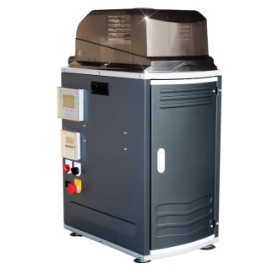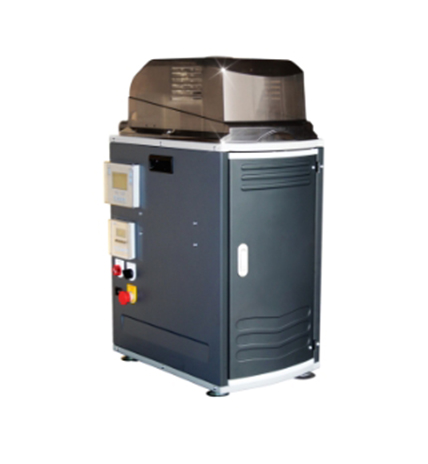BEST-1 Unit combines the following features into one system
- Filtration of Impurities - 304 stainless steel filter with zero consumables
- Rest-Time Process - where tramp oil separation occurs physically due to density
- Coolant Oil Separation - clean water is being separated
- Waste Oil Separation - waste oil is being discharged and removed
- Bacteria Sterlization - purification with Ozone to minimize bacteria growth and deodorize the stench
Why Is Ozone Required?
The anaerobic bacteria that grow in the contaminated coolant is the main reason of rancidity and foul odor. From our experience in the field of metalworking fluids, the deterioration of the coolant will not be solved and cured by plain separation of the coolant oil.
This is why we include an ozone generator to eliminate and minimize the growth of bacteria in order to achieve an extended lifetime for the coolant.
What Does the Control Panel Do:
It coordinates the duration of:
1. Pumping unit (suction) from the coolant tank
2. The rest time technique (using density theory to let the tramp oil float)
3. Oil skimmer unit (the process of oil-water separation)
4. Ozone generator (the sterilization and purification of the coolant)
These functions can be independently controlled and paused.
pH Detection (Optional Feature):
pH fluctuation is the major sign indicating the beginning of coolant rancidity. The regular pH values for coolants should be maintained between 8.00 to 9.50. In comparison to a test paper, this device acts sensitively to provide an accurate value to 2 decimal places, giving alarms to users and providing a more efficient way to manage the coolant condition.
-
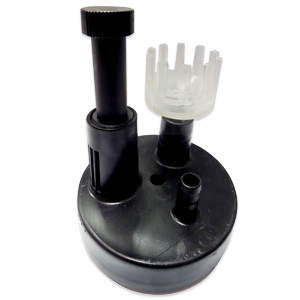 Step 1:Oil collector - collecting all the coolant from the coolant tank.
Step 1:Oil collector - collecting all the coolant from the coolant tank. -
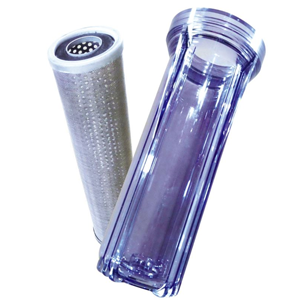 Step 2:Filter set - filtering impurities that float on the coolant surface.
Step 2:Filter set - filtering impurities that float on the coolant surface. -
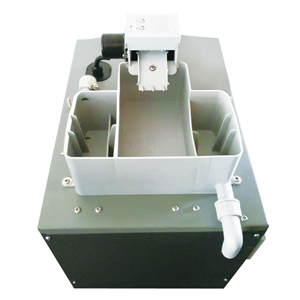 Step 3:Oil removal unit - the coolant oil separation process which removes the waste oil from coolant in lowest moisture.
Step 3:Oil removal unit - the coolant oil separation process which removes the waste oil from coolant in lowest moisture. -
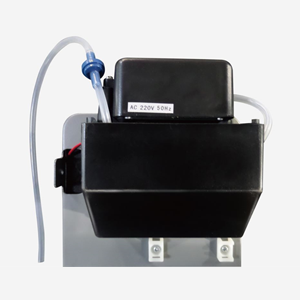 Step 4:Ozone generator - purifies the coolant by eliminating the anerobic bacteria which is usually the cause of a rancid coolant and foul odor.
Step 4:Ozone generator - purifies the coolant by eliminating the anerobic bacteria which is usually the cause of a rancid coolant and foul odor. -
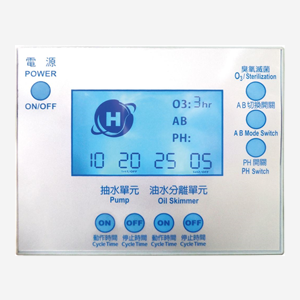 Step 5:Control panel - automatically coordinates the duration of suction, rest time, oil skimmer unit and the ozone unit.
Step 5:Control panel - automatically coordinates the duration of suction, rest time, oil skimmer unit and the ozone unit. -
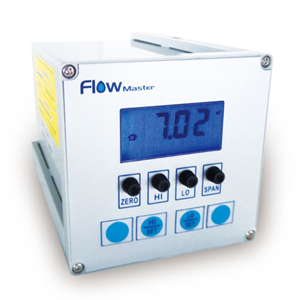 Step 6:pH detection - detects the pH values and help maintain the coolant that is being purified by Best-1 unit.
Step 6:pH detection - detects the pH values and help maintain the coolant that is being purified by Best-1 unit.
| Model | BEST-1 |
|---|---|
| Machine Size(L*W*H) | 520*410*880mm |
| N.W. | 45kg |
| Power | Single Phase.220V.AC 50HZ 0.042Kw |
| Power Consumption | consumption of 1 KWH of electricity in 24 hours |
| Suction Capacity | 10-30 Lit. /Minute |
| Value of Ozone | 500mg /hr (produce 500mg of ozone per hour) |
Why Is Ozone Required?
The anaerobic bacteria that grow in the contaminated coolant is the main reason of rancidity and foul odor. From our experience in the field of metalworking fluids, the deterioration of the coolant will not be solved and cured by plain separation of the coolant oil.
This is why we include an ozone generator to eliminate and minimize the growth of bacteria in order to achieve an extended lifetime for the coolant.
What Does the Control Panel Do:
It coordinates the duration of:
1. Pumping unit (suction) from the coolant tank
2. The rest time technique (using density theory to let the tramp oil float)
3. Oil skimmer unit (the process of oil-water separation)
4. Ozone generator (the sterilization and purification of the coolant)
These functions can be independently controlled and paused.
pH Detection (Optional Feature):
pH fluctuation is the major sign indicating the beginning of coolant rancidity. The regular pH values for coolants should be maintained between 8.00 to 9.50. In comparison to a test paper, this device acts sensitively to provide an accurate value to 2 decimal places, giving alarms to users and providing a more efficient way to manage the coolant condition.

